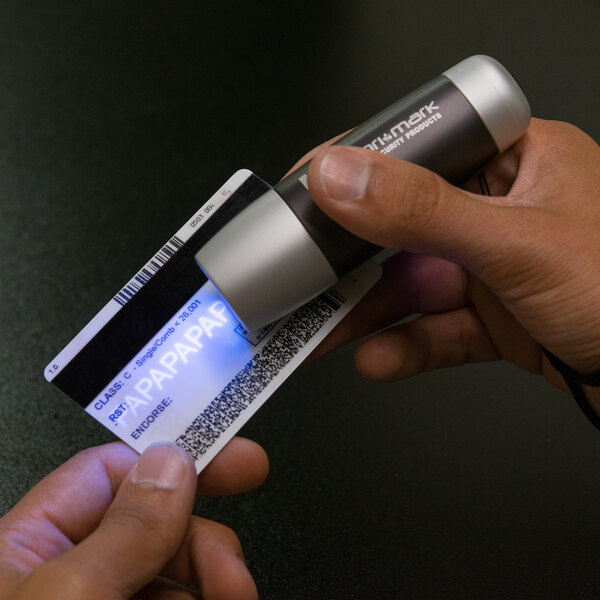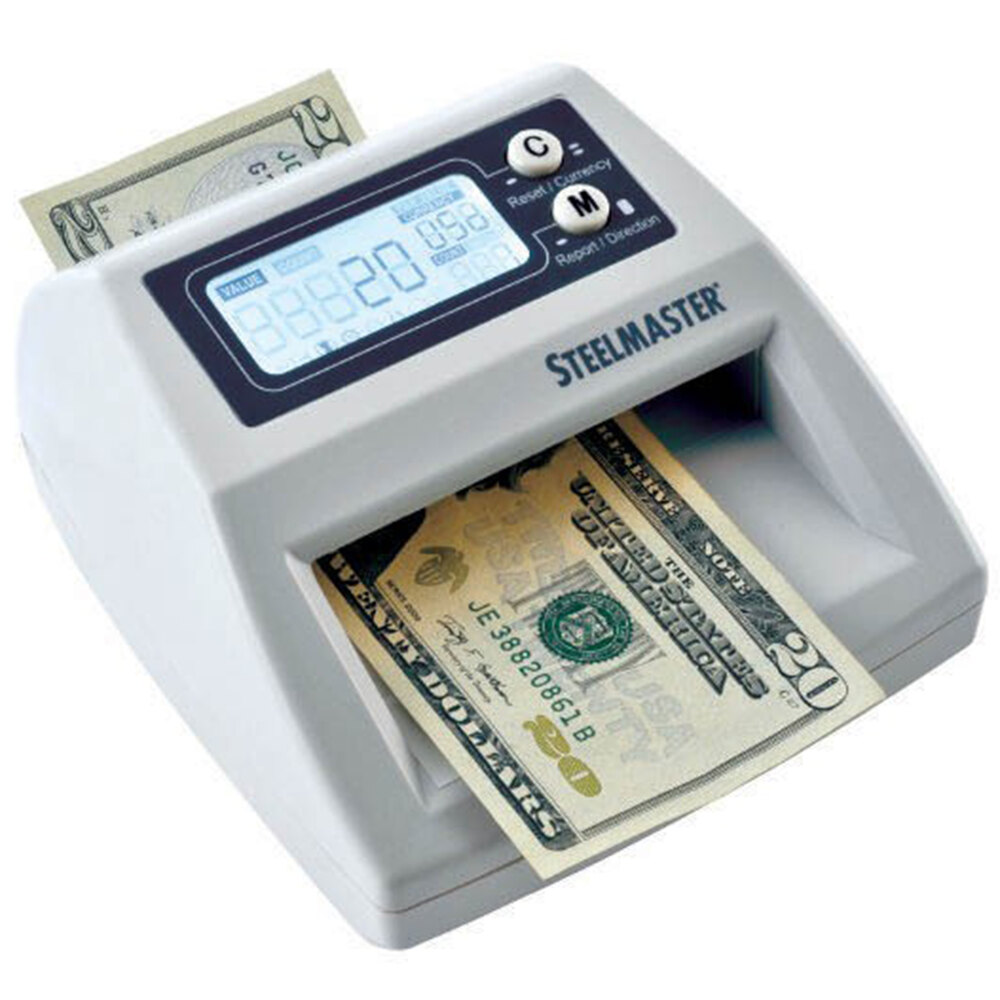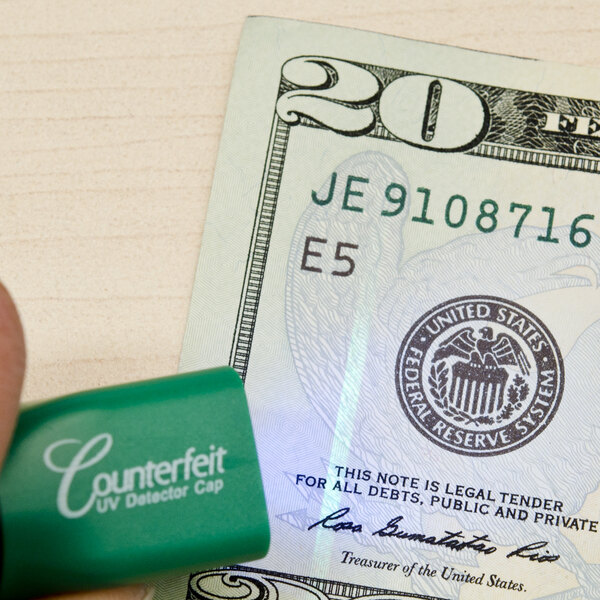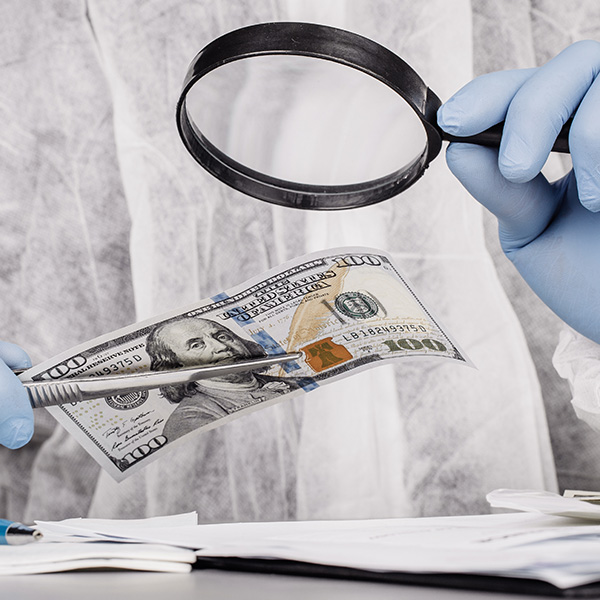How Do Money Pens Work
7 Ways to Tell if Money is Real
With advances in printing technology, fake money that looks real can be challenging to identify. To spot counterfeits, look for the absence of features like security threads, UV properties, watermarks, color shifting inks, and others.
- Security Threads: Since 2004, all bills $5 and larger have a clear thread embedded vertically in the bill that is visible when held up to the light. Each denomination has the thread at a different spot.
- UV Properties: If you shine an ultraviolet light on a bill, the security thread will glow. Each denomination glows a different color.
- Magnetic & Color Shifting Inks: Some counterfeit detectors can sense the magnetic properties of inks to tell if bills are real. Also, 2004 style bills $10 and greater have a color shifting numeral printed in the lower right front corner.
- Watermarks: Bills from after 2004 have a watermark that is visible from either side when held up to a light.
- Paper: Real currency uses special paper that is 25% linen and 75% cotton with tiny embedded red and blue fibers.
- Size: Paper money is a very specific size. Some counterfeit detectors are capable of finding inconsistently-sized bills.
- Microprinting: Tiny lettering that looks like a simple line to the naked eye is called microprinting. Real U.S. currency has this feature, which can actually be read with the use of a magnifying glass.
Fake bills can sometimes have a few of these features but it is difficult to replicate all of them perfectly. If your business receives a lot revenue in cash, it is a good practice to check for more than one sign of counterfeiting.
Why Do I Need Counterfeit Money Detectors?
If you provide the proper tools and teach staff members how to spot fake money, you can reduce the amount your operation loses due to counterfeits. Many bars, restaurants, clubs, and resorts handle a lot of cash on a daily basis, which makes them vulnerable to counterfeit bills.
Some tools, like UV lights, are used to detect counterfeit money and can also be used to check the authenticity of patrons' ID cards. Checking IDs is required if your business serves alcohol, and taking extra steps to make sure those IDs are real can help to protect your establishment from liability.
Types of Counterfeit Money Detectors
From pens, to UV lights, to currency counters with built-in counterfeit detection, different types of counterfeit detectors are great for different applications. When choosing a counterfeit detector, keep in mind that relying on just one testing method may not be sufficient. Checking for more than one factor is important because improvements in technology have made fakes harder to spot.
Counterfeit pens are a great starting place, but keep in mind that this type of detector will not work on "bleached" bills. Bleaching is a common method of counterfeiting. Bleached bills have a lower denomination's printing bleached off, then are re-printed with a higher denomination. Be sure to review all your options to find the counterfeit detector that will best fit your business's needs.

UV Lights
How it Works: UV lights can be used to show the security threads, ribbons, and watermarks in money or markings on customers' IDs that are invisible without a UV light.
Tests For: Security threads, watermarks, hidden markings.

UV Light Systems
How it Works: This system features a UV light set in a base with helpful indicators to show where security threads should be for different denominations. Simply place a bill on the light to make sure that the security thread lines up with the correct location and glows the correct color.
Tests For: Security threads, watermarks.

Currency Counters / Detectors
How it Works: Different models of bill counters use different types of technology to find counterfeits. Most models use UV, magnetic, and/or infrared technology.
Tests For: Security threads, magnetic ink, size.

Counterfeit Detector Pens
How it Works: Counterfeit pens use an iodine-based ink that reacts with starches contained in wood. Because real money is printed on linen and cotton paper, the ink remains clear or slightly yellow. If a bill is printed on wood-based paper, the ink reacts and turns dark. Some pens come with a coil cord so you can keep them attached to your cash register.
Tests For: Correct paper.

UV Light / Counterfeit Pens
How it Works: A UV light / counterfeit pen keeps two types of detection in one convenient place. It has a pen on one end and a UV light on the other. The pen can be used to test currency paper, while the UV light end can test for security threads and watermarks or help in determining the authenticity of identification cards.
Tests For: Correct paper, security threads, watermarks.

Magnifying Glasses
How it Works: For more advanced investigation of suspect bills, a magnifying glass comes in handy. It allows you to look for errors in the printing of the bill, like the presence or absence of microprinting. They can also make it easier to read serial numbers.
Tests For: Printing errors, microprinting.
What to Do with Counterfeit Money
If you suspect that you have received a counterfeit bill, you will want to report it to the U.S. Secret Service or the police right away.
The U.S. Department of the Treasury recommends the following steps:
- Don't return the bill. Instead, observe and write down as much information as possible about the person or group that gave it to you. If possible, include physical descriptions and license plate numbers.
- Contact the local police or the local U.S. Secret Service office right away.
- Handle the suspected counterfeit money as little as possible. Place the note in a marked, protective cover like an envelope or plastic bag to keep it separate from your other cash.
- Surrender the bill only to a police officer or Secret Service agent who has properly identified himself or herself. You can also mail it to the U.S. Secret Service field office that is closest to your location.
How Do Money Pens Work
Source: https://www.webstaurantstore.com/guide/884/types-of-counterfeit-detection-systems.html
Posted by: falktrocce.blogspot.com

0 Response to "How Do Money Pens Work"
Post a Comment